They say that there are two seasons in Hawaii -- a dry season and a rainy season. The internet might even tell you that that dry season runs from April to October while it’s “rainy” between November and March. But let’s break down what the “rainy” season really means for your Hawaiian vacation.
You’d be hard-pressed to feel the difference between summer and winter, or, in this case, the dry and rainy seasons. There’s only a few degrees difference in air temperature, and you’ll be treated to mid-80’s weather no matter what time of year you visit.
A Typical Rainy Season Day
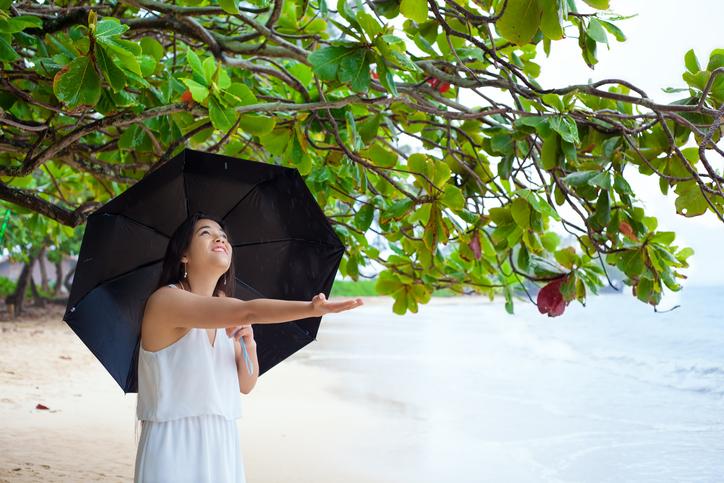 Pop open your smartphone and you’re likely to see a string of rain clouds during the rainy season, but this is misleading. A typical day during the rainy season begins with a beautiful morning. If you’re on Kauai, it starts with feral roosters cocka-doodle-doing to a clear sunrise.
Pop open your smartphone and you’re likely to see a string of rain clouds during the rainy season, but this is misleading. A typical day during the rainy season begins with a beautiful morning. If you’re on Kauai, it starts with feral roosters cocka-doodle-doing to a clear sunrise.
The day then begins to build in humidity as the skies grow partly cloudy. Then there’s a crescendo of humidity in the afternoon that gathers the clouds for a short, cooling shower. It can be quite refreshing. A few minutes later, the clouds break and Hawaii goes back to being its normal tropical self.
Don’t believe those rain clouds on your phone’s forecast. The near-daily rainy season shower is nothing that should deter your dream Hawaiian vacation. A similar weather pattern strikes Florida in the summer, but east coasters still flock to the Sunshine State in droves.
Rainy Season Is Geographically Relative
 Mount Waialeale, the dormant volcano towering in the center of Kauai, is the rainiest place on earth. You can sit on the second floor of the Olympic Cafe in Kapaa to look out on the rainy horizon, day after day, even as you sit under blue skies.
Mount Waialeale, the dormant volcano towering in the center of Kauai, is the rainiest place on earth. You can sit on the second floor of the Olympic Cafe in Kapaa to look out on the rainy horizon, day after day, even as you sit under blue skies.
That rainwater pours into the mountain’s crater to create thousands of waterfalls known as the Blue Hole or the Weeping Wall. Those waterfalls then converge to carve the only navigable rivers in the state of Hawaii out to sea.
Meanwhile, on The Big Island, Kona City sits in the middle of an arid field of volcanic rocks. The name Kona roughly translates to the sailing term “leeward.” It means the side of an island less likely to see a storm, and Kona is not about to see rain anytime soon. It is the capital of the dry desert west side which is cut off from the rainforest of the east side by the island’s towering dormant volcano. The top of Mauna Kea, which stands more than 13,000 feet above sea level, sees snowfall during January and February even as Kona remains dry.
The effects of the rainy season vary depending on your location on the islands, but you can expect a typical rainy season day unless you're holed up in Kona.
Added Bonus For Visiting During Rainy Season
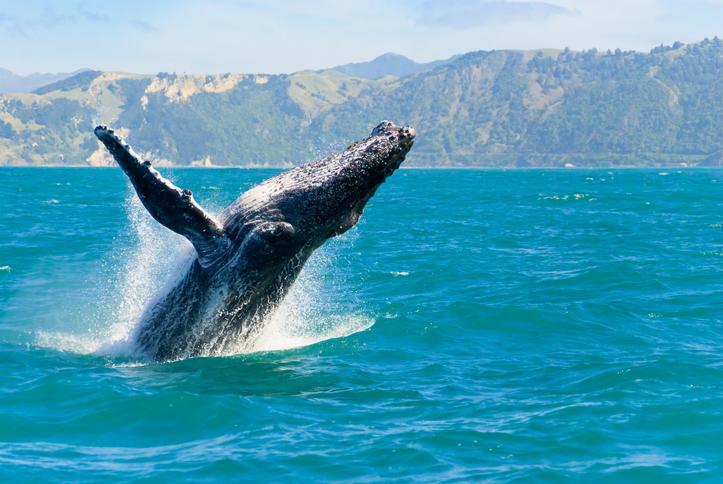 Humpback whales make one of the world’s longest migrations to breed in the water of Hawaii. They swim for six to eight weeks straight over the course of 6,000 miles from the colder waters of the world. Some come from Alaska while others come from the southern hemisphere.
Humpback whales make one of the world’s longest migrations to breed in the water of Hawaii. They swim for six to eight weeks straight over the course of 6,000 miles from the colder waters of the world. Some come from Alaska while others come from the southern hemisphere.
The whales begin to arrive in the waters of Hawaii in January and usually stay until March. You can often see them breaching off in the distance as they try to attract a mate. The whales come to the safer and warmer waters of Hawaii to breed, birth and raise calves before venturing off again.
You can join a whale watching tour which will take you very close to the whales, or you can enjoy their playful nature from the safety of a sandy beach. And, if you’re really lucky, you’ll see them flying spinner dolphins off their snouts in a rare instance of inter-species play.
Hawaii’s Hurricane Season
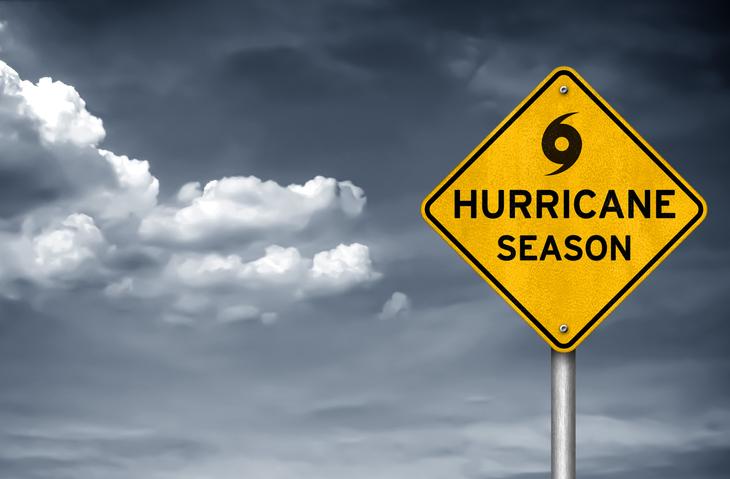 Hurricanes make landfall on the Hawaiian islands every 10 to 20 years, or so, and they can be quite destructive. You can see some of the lasting effects on the island of Kauai. Hurricane Iniki made landfall in 1992. It’s power let dozens of caged chickens free on the island and now there’s a massive feral chicken population. The farm birds have flourished so much that you might be bothered by a chicken or two if you sit down to eat a meal outside.
Hurricanes make landfall on the Hawaiian islands every 10 to 20 years, or so, and they can be quite destructive. You can see some of the lasting effects on the island of Kauai. Hurricane Iniki made landfall in 1992. It’s power let dozens of caged chickens free on the island and now there’s a massive feral chicken population. The farm birds have flourished so much that you might be bothered by a chicken or two if you sit down to eat a meal outside.
There’s no way to make a long term forecast for the superstorms and hurricane season straddles the dry and rainy seasons. It runs between June and November. If a hurricane is forecasted for your Hawaiian vacation, it’s best to cancel, and it’s time to call upon that travel insurance. Although, this is extremely rare. You’re much better off worrying about Hawaii’s real rain.
Hawaii’s Real Rain
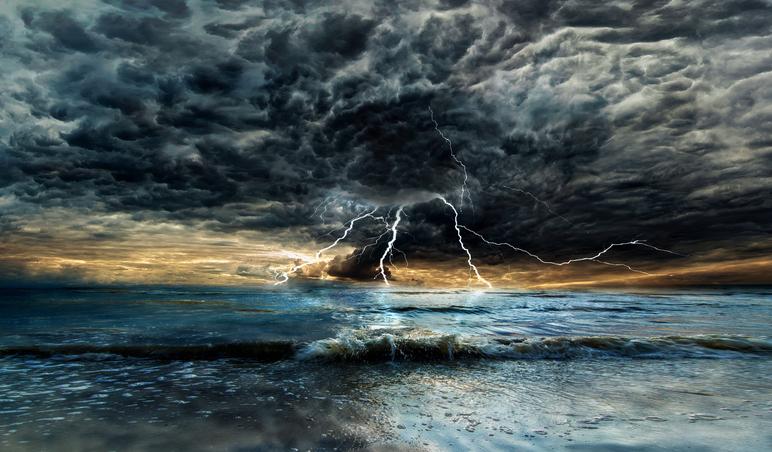 Low-pressure systems do come through the islands from time to time. These systems bring lots of rain with them that can last a day or more, and they can strike any time of year. Although, they are more likely to arrive during the rainy season.
Low-pressure systems do come through the islands from time to time. These systems bring lots of rain with them that can last a day or more, and they can strike any time of year. Although, they are more likely to arrive during the rainy season.
Occasionally, these storms can be so big that they become life-threatening. The north shore of Kauai, for instance, is the rainy side of the island. The Hanalei River can swell to such a degree that authorities shut down the only way out of the valley -- the one-lane bridge to Princeville -- which effectively cuts off an entire Hawaiian town until the rains stop.
Again, the threat of rain is tied to your geographical location on the islands, so it’s helpful to understand your area’s propensity for precipitation so that you can be prepared. These massive rainstorms are incredibly rare, so you’re more likely to find yourself under cloudy skies with a smattering of rain for a day or two.
Rainy Day Safety
The typical rainy day in Hawaii is dreary, cloud-covered and in the mid-’70s. But the mid-’70s might feel incredibly warm to you if you’re visiting during winter. However, you should fight the urge to be active in the outdoors during the rain.
Do Not Swim In The Ocean
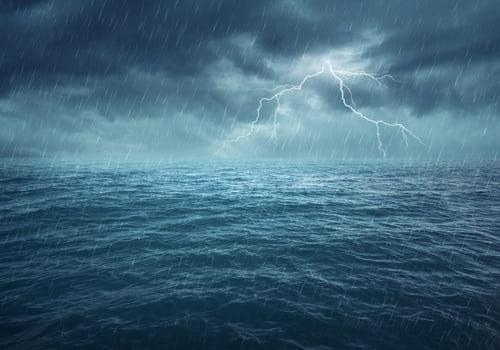 Rain carves its way down cliff sides into rivers, creeks, and confluences while making its way to the ocean. It brings sediment and can even flush freshwater fish out to sea. That’s why sharks like to lurk in the murky ocean waters during a rainstorm.
Rain carves its way down cliff sides into rivers, creeks, and confluences while making its way to the ocean. It brings sediment and can even flush freshwater fish out to sea. That’s why sharks like to lurk in the murky ocean waters during a rainstorm.
Shark bites are incredibly rare on the islands, but you up to your chances of a bite by swimming in murky, rainy ocean water. That’s because a shark that’s come to the coast to the feast of fish may mistake you for a tasty treat. But don’t worry -- sharks don’t like the taste of the iron in your blood. They’re unlikely to bite twice and they aren’t looking to eat you.
You won’t find any locals in the water during or just after a rainstorm, so you should stay out of the water, too. And you up to your chances of a nibble quite a bit near the mouth of a river or stream.
Do Not Hike
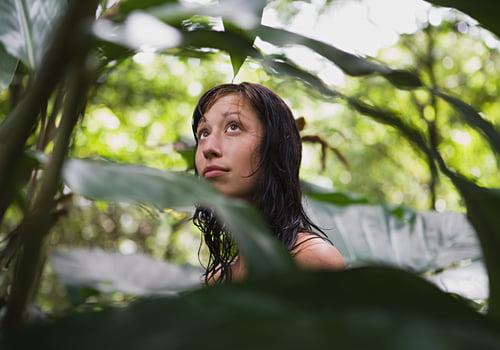 Hawaii’s world-famous red dirt slicks up quite a bit when it rains. The muck is capable of staining your shoes, but it can also have you falling down. The worst-case scenario sees you sliding to a cliff’s edge on friction-less muck. The best-case scenario sees you emerging from a hike covered in bruises and stained from the red mud.
Hawaii’s world-famous red dirt slicks up quite a bit when it rains. The muck is capable of staining your shoes, but it can also have you falling down. The worst-case scenario sees you sliding to a cliff’s edge on friction-less muck. The best-case scenario sees you emerging from a hike covered in bruises and stained from the red mud.
Stay Out From Under Waterfalls
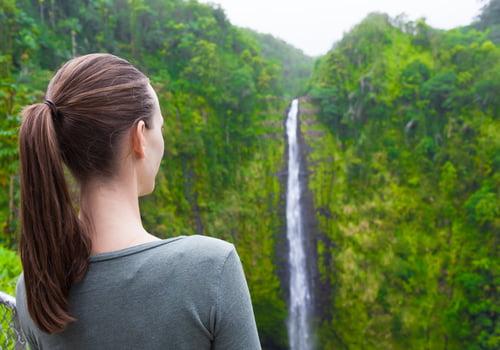 The rain can swell rivers, creeks, and confluences to such a degree that the water picks up debris. Large rocks and tree trunks can come rushing down a creek to topple over the edge of a waterfall. Just take a look at the pool at the base of your favorite waterfall. All those massive rocks and tree trunks, at some point, came tumbling over the top of the falls during a rainstorm. In fact, stay away from any rivers and streams as well, as they can become raging torrents very quickly.
The rain can swell rivers, creeks, and confluences to such a degree that the water picks up debris. Large rocks and tree trunks can come rushing down a creek to topple over the edge of a waterfall. Just take a look at the pool at the base of your favorite waterfall. All those massive rocks and tree trunks, at some point, came tumbling over the top of the falls during a rainstorm. In fact, stay away from any rivers and streams as well, as they can become raging torrents very quickly.
Rainy Day Fun
A rainy day or two should not ruin your Hawaiian vacation. You’ll just have to adjust your itinerary. Here are a few tips:
Go To A Waterfall’s Lookout
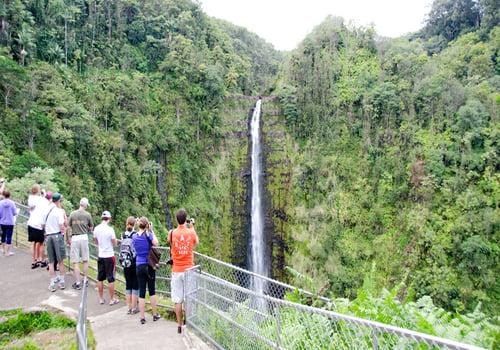 Being underneath a waterfall during a rainstorm can be dangerous, but that doesn’t mean waterfalls aren’t beautiful during a rainstorm. You can drive up to many waterfalls on the islands where you can look at the swelling cascading water from a safe distance.
Being underneath a waterfall during a rainstorm can be dangerous, but that doesn’t mean waterfalls aren’t beautiful during a rainstorm. You can drive up to many waterfalls on the islands where you can look at the swelling cascading water from a safe distance.
You’ll see that the water has changed color quite a bit. That brown or red hue is Hawaii’s slippery dirt that is being washed out to sea. You can also look carefully for fish tumbling over the falls, and, if you’re lucky, you’ll be able to see massive rocks or trees come over. It’s a powerful sight.
You can also think about the impermanence of the islands. Every island except for Hawaii is being slowly washed out to sea. These rainstorms are wearing down the island, and, at some point in the distant future, the island will sink into the ocean and be no more.
Drive To The Dry Side Of The Island
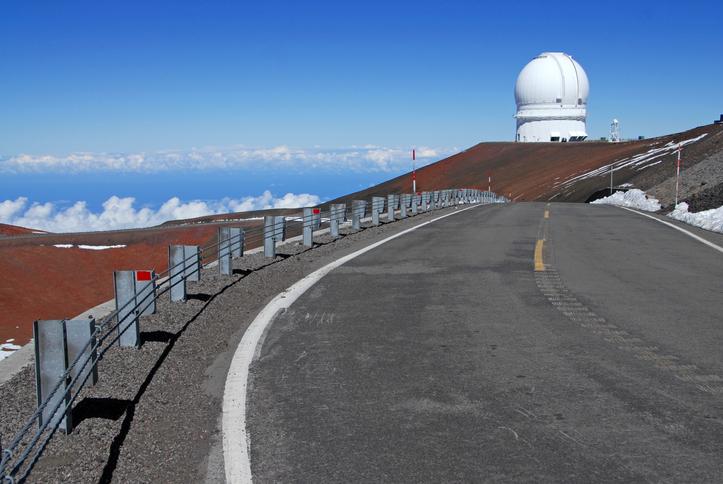 A clear day is never more than a drive away if you’re on The Big Island. Simply drive to Kona and its many beaches. Even the tiny island of Kauai has a wet, dry, and driest side of the island. Simply check the forecast for Poipu, Waimea, and Polihale if you’re stuck under a rain cloud.
A clear day is never more than a drive away if you’re on The Big Island. Simply drive to Kona and its many beaches. Even the tiny island of Kauai has a wet, dry, and driest side of the island. Simply check the forecast for Poipu, Waimea, and Polihale if you’re stuck under a rain cloud.
The Hawaiian islands feature a central mountain that attracts rain clouds that are speeding over the Pacific Ocean. The clouds stick to one side of the mountain to dump rain in a specific spot. That means there’s usually a dry side to the island during a rainy day. Go find it. Just make sure to check the forecast before going for that hike.
Karaoke
 There’s nothing like an embarrassing attempt at Bohemian Rhapsody to bring the whole crew together. You’re likely to find a restaurant or bar running karaoke on a rainy day. Some establishments enforce age limits, but you might be able to find a restaurant for all ages to keep the entire family entertained.
There’s nothing like an embarrassing attempt at Bohemian Rhapsody to bring the whole crew together. You’re likely to find a restaurant or bar running karaoke on a rainy day. Some establishments enforce age limits, but you might be able to find a restaurant for all ages to keep the entire family entertained.
Movies
 Hawaii is all about relaxation. Take advantage of that rainy day by heading to the movies to see that flick you’ve always wanted to see. Just get there early to beat the lines.
Hawaii is all about relaxation. Take advantage of that rainy day by heading to the movies to see that flick you’ve always wanted to see. Just get there early to beat the lines.
Or you can picnic inside your hotel. Go to the local grocery store to pick up some Hawaiian treats like poke, lay it all out on the bed and order a movie.
Museums
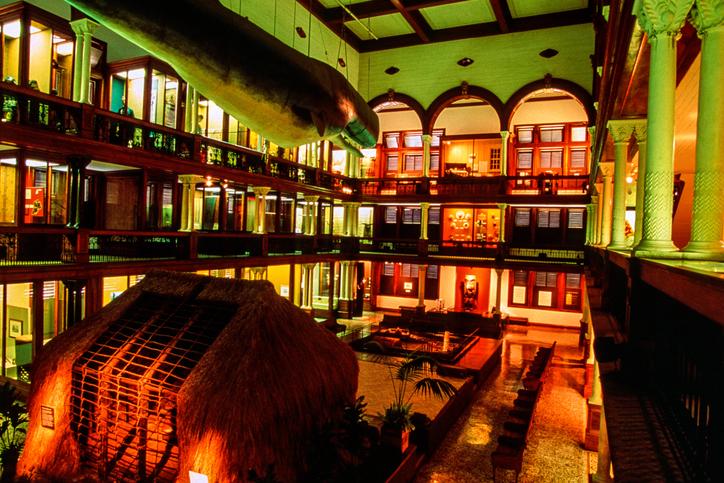 Oahu features the Bernice Pauahi Bishop Museum with interactive exhibits and ancient artifacts. Experience Hawaii’s marine life at the Waikiki Aquarium or the Maui Ocean Center. The whole family can enjoy light shows at The Imiloa Astronomy Center on the Big Island. And there’s even an interactive museum on Kauai that features monthly Ohana Days with free activities. You’re never far from a day spent inside a museum.
Oahu features the Bernice Pauahi Bishop Museum with interactive exhibits and ancient artifacts. Experience Hawaii’s marine life at the Waikiki Aquarium or the Maui Ocean Center. The whole family can enjoy light shows at The Imiloa Astronomy Center on the Big Island. And there’s even an interactive museum on Kauai that features monthly Ohana Days with free activities. You’re never far from a day spent inside a museum.
 Bowling
Bowling
Stay semi-active with a day at the bowling alley. You can even pay for a ride to the alley in order to make a day of it with your friends. Grab a drink and enjoy some friendly competition.
Restaurants
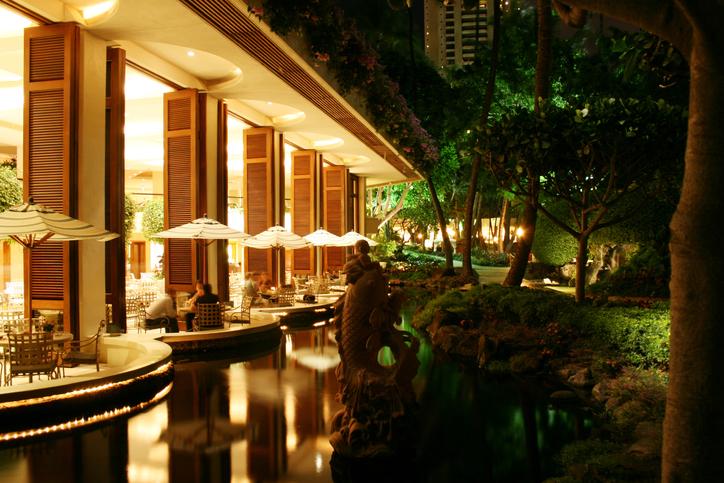 A rainy day is a perfect time to enjoy those fancy restaurants. With the rain coming down, you won’t be distracted by ocean views or outdoor dining. You’ll be able to focus your senses on the food experience. Why not pick out a restaurant for both lunch and dinner?
A rainy day is a perfect time to enjoy those fancy restaurants. With the rain coming down, you won’t be distracted by ocean views or outdoor dining. You’ll be able to focus your senses on the food experience. Why not pick out a restaurant for both lunch and dinner?
Shop
It’s time to pick up some souvenirs. You can find a shopping mall, or you can drive around to standalone shops. It’s the perfect way to escape the weather, and you don’t have to feel like you’re missing out by shopping during nice weather.
 Take A Yoga Class
Take A Yoga Class
Do a little snooping on the internet to find a yoga class near you. You’ll leave the class totally at peace with your bad weather vacation day. And for added flavor, look for a yoga class that takes place in a local’s house.
Set The Mood At Pearl Harbor
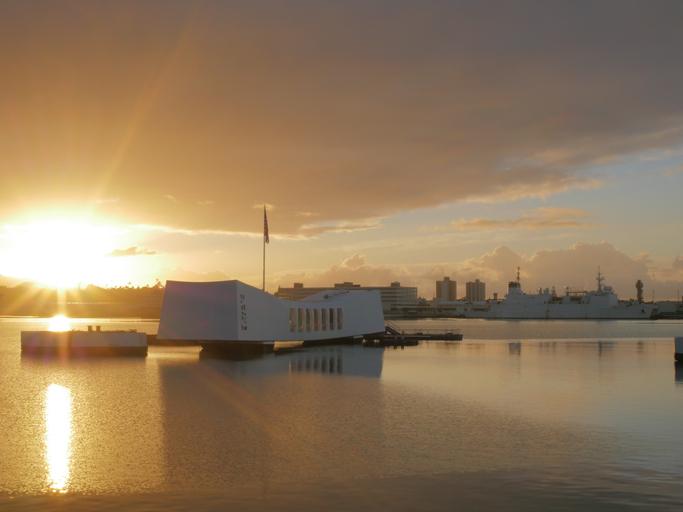 A rainy day is a perfect time to visit Pearl Harbor as it sets a somber mood. More than 2,000 people lost their lives on that fateful December day in 1941, and it was an act of unprovoked aggression that brought a reluctant America full-steam into World War II. There will likely be fewer people at the monument braving the rain which will allow you to pay isolated homage while staring silently at the raindrops falling atop the sunken ships.
A rainy day is a perfect time to visit Pearl Harbor as it sets a somber mood. More than 2,000 people lost their lives on that fateful December day in 1941, and it was an act of unprovoked aggression that brought a reluctant America full-steam into World War II. There will likely be fewer people at the monument braving the rain which will allow you to pay isolated homage while staring silently at the raindrops falling atop the sunken ships.
See An Indoor Show
You can catch indoor rock-and-roll shows at Concert Waikiki and Magic Polynesia on Oahu, but Maui puts on the islands’ best with Ulalena. Using Cirque du Soleil-style moves, the theatrical production takes you through the rich history of the islands.
 Brave The Rain For The Pool
Brave The Rain For The Pool
The rain has never stopped a kid from wanting to be in the pool. Make sure it’s not thundering or lightning, and then enjoy a day escaping the rain underwater. You’ll likely have the whole pool grounds to yourselves, and a hot shower after the pool will be quite recharging.
The Spa
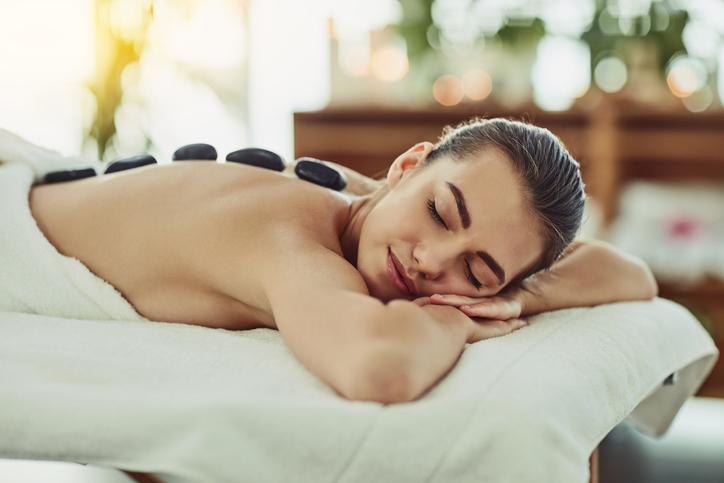 Escape the gray day for the tranquility of a spa. Call ahead to make a booking and to get the best price, and always ask if your spa treatment comes with perks. Some of the islands’ fanciest hotels offer spa patrons a free day pass to the hotel’s grounds. You’ll have access to hot tubs, saunas, the gym, the pool, and even water slides.
Escape the gray day for the tranquility of a spa. Call ahead to make a booking and to get the best price, and always ask if your spa treatment comes with perks. Some of the islands’ fanciest hotels offer spa patrons a free day pass to the hotel’s grounds. You’ll have access to hot tubs, saunas, the gym, the pool, and even water slides.
Indoor Rock Climbing
Stay active by finding an indoor rock climbing wall. You might be hard-pressed to find such an amenity on an island like Kauai, but you should have no problem finding an indoor rock climbing wall on Oahu.
Summary
In summary, although all-day rain is pretty rare across the entire island, it can happen. Have a few ideas planned out in case it happens on your trip, and don’t let it ruin your vacation, just go with it, and enjoy the parts of the island that you are able to in the rain. And one more thing, the rain here is actually pretty warm, so don’t be afraid to head out into the rain to enjoy the island, they don’t make those Hawaiian shirts so thin for nothing, you’ll dry out very quickly.
 Bowling
Bowling Take A Yoga Class
Take A Yoga Class Brave The Rain For The Pool
Brave The Rain For The Pool